★★
“Cops and robbers, Japanese style, with much T&A.”
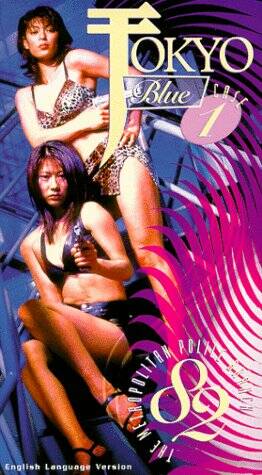 You know where you stand with this film inside five minutes, from the moment policewoman heroine Mika Hino (Shiratori) is made to strip off by bad guys hunting for a key – which she naturally is keeping in her lingerie. Mind you, this pales in comparison with where partner Rin Kakura (Kuribayashi) hides her gun… The problem with this tape is that such intimate details are far more interesting than the plot, a tired and severely uninteresting search for a master counterfeiter.
You know where you stand with this film inside five minutes, from the moment policewoman heroine Mika Hino (Shiratori) is made to strip off by bad guys hunting for a key – which she naturally is keeping in her lingerie. Mind you, this pales in comparison with where partner Rin Kakura (Kuribayashi) hides her gun… The problem with this tape is that such intimate details are far more interesting than the plot, a tired and severely uninteresting search for a master counterfeiter.
While there’s no denying the charms of the leading ladies, most of the time they’re displayed with precious little imagination, and their characters are far less appealing than their bodies. It’s also very hard to disapprove of the lecherous colleagues depicted by the movie, when the film is at almost the same mental level. Only in the last fifteen minutes, as Mika strives to rescue the captured Rin from an all-girl team of guards, do things start to perk up, with Mika becoming something of an avenging angel, slaughtering receptionists with effective skill and disturbing delight. Unfortunately, this only really goes to show up the first hour of this film, actually the third in the Metropolitan Police Branch 82 series, for the tedious waste of time it is. Best line in the enthusiastic but futile dub: “I’m a blueberry tart!”
[This review originally appeared in Manga Max]
Dir: Younosuke Koike
Star: Chieko Shiratori, Tomomi Kuribayashi, Keiji Matsuda, Hitomi Shimizu





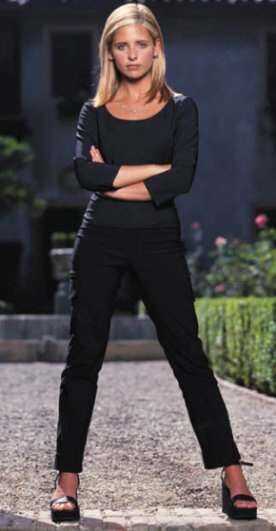 Season Six was in trouble from the start, with the titular heroine (literally) dead and buried. Bringing Buffy back from beyond was a problem always likely to perplex, because once you start resurrecting characters, nothing is a threat any more. Although this was handled moderately well, the show really started to fall apart after the musical episode. This demonstrated one thing beyond all reasonable doubt – why the cast are actors. From then on, most of the stories seemed to have been cribbed from daytime soaps. Buffy has sex with Spike, feels bad about it, then does it again. Xander and Anya’s on-off-off-on-off wedding and relationship. Willow and Tara were no more solidly committed, and the clumsy “magic=drugs” story arc was the sort of thing I’d expect to see on Charmed. In addition, the main bad guys for 90% of the series were a trio of geeks, minor bit players from previous episodes, who were about as threatening as flies, albeit rather more annoying.
Season Six was in trouble from the start, with the titular heroine (literally) dead and buried. Bringing Buffy back from beyond was a problem always likely to perplex, because once you start resurrecting characters, nothing is a threat any more. Although this was handled moderately well, the show really started to fall apart after the musical episode. This demonstrated one thing beyond all reasonable doubt – why the cast are actors. From then on, most of the stories seemed to have been cribbed from daytime soaps. Buffy has sex with Spike, feels bad about it, then does it again. Xander and Anya’s on-off-off-on-off wedding and relationship. Willow and Tara were no more solidly committed, and the clumsy “magic=drugs” story arc was the sort of thing I’d expect to see on Charmed. In addition, the main bad guys for 90% of the series were a trio of geeks, minor bit players from previous episodes, who were about as threatening as flies, albeit rather more annoying.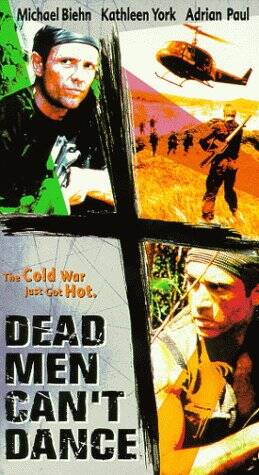 Plotwise, this is a by-the-numbers action thriller about a special forces group on a mission in the Korean Demilitarised Zone, who get embroiled in a CIA operation to retrieve nuclear triggers. Why it merits any coverage here, is because their command structure is matriarchal, from Brigadier General Burke (Zabriskie), through their operational leader and former agency operative Victoria Elliot (York), down to Staff Sergeant Rhodes (Barbara Eve Harris), who could give R. Lee Ermey a run for his money – Ermey, incidentally, turns up as the CIA boss.
Plotwise, this is a by-the-numbers action thriller about a special forces group on a mission in the Korean Demilitarised Zone, who get embroiled in a CIA operation to retrieve nuclear triggers. Why it merits any coverage here, is because their command structure is matriarchal, from Brigadier General Burke (Zabriskie), through their operational leader and former agency operative Victoria Elliot (York), down to Staff Sergeant Rhodes (Barbara Eve Harris), who could give R. Lee Ermey a run for his money – Ermey, incidentally, turns up as the CIA boss.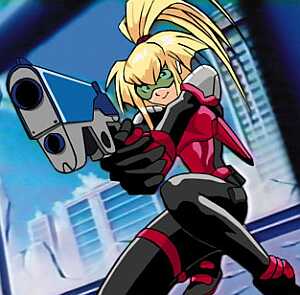 This teeters infuriatingly close to greatness, but eventually succumbs to mediocrity because of a tendency to juvenile smuttiness, that fatally weakens what is, at heart, an intriguing story and setting. The Warriors are a special police group – mostly female, with one token (lecherous) man – sent in to sort out nasty cases. The main thread in the four episodes here, is a virtual drug which can turn the consumer into a mind-controlled killer – or, presumably, anything else desired.
This teeters infuriatingly close to greatness, but eventually succumbs to mediocrity because of a tendency to juvenile smuttiness, that fatally weakens what is, at heart, an intriguing story and setting. The Warriors are a special police group – mostly female, with one token (lecherous) man – sent in to sort out nasty cases. The main thread in the four episodes here, is a virtual drug which can turn the consumer into a mind-controlled killer – or, presumably, anything else desired.
 Women-in-prison is not a genre greatly within our remit, since they’re often just an excuse for a bit of soft-core masochism. There are occasional exceptions, however, and this is one, with its origins as a network TV show forcing restraint of the more exploitative aspects, as well as permitting the characters to develop more fully than in a movie.
Women-in-prison is not a genre greatly within our remit, since they’re often just an excuse for a bit of soft-core masochism. There are occasional exceptions, however, and this is one, with its origins as a network TV show forcing restraint of the more exploitative aspects, as well as permitting the characters to develop more fully than in a movie.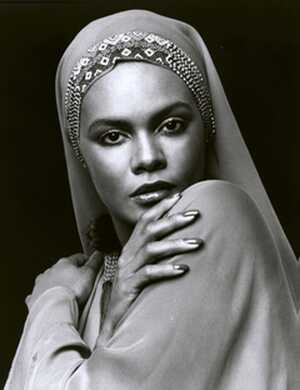 The success of independent blaxploitation films inevitably let to the major studios trying to cash in, and this applied to both sexes. Jones was their response, with 6’2″ Tamara Dobson over-filling Pam Grier’s shoes, as the special agent taking on dyke drug queen Mama (Winters, chewing scenery atrociously) and police corruption, at home and abroad (“Turkey”, supposedly – I wasn’t convinced).
The success of independent blaxploitation films inevitably let to the major studios trying to cash in, and this applied to both sexes. Jones was their response, with 6’2″ Tamara Dobson over-filling Pam Grier’s shoes, as the special agent taking on dyke drug queen Mama (Winters, chewing scenery atrociously) and police corruption, at home and abroad (“Turkey”, supposedly – I wasn’t convinced).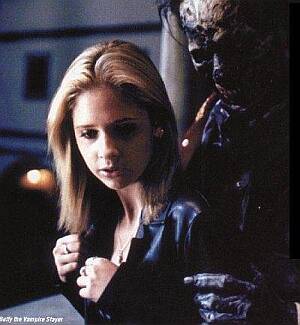 While there have been stand-out Buffy episodes since, season two perhaps ranks as the most consistently high in quality. There’s hardly an episode that ranks as less than excellent, and the writing is sparklingly witty, with more eminently quotable lines than you can shake a stake at.
While there have been stand-out Buffy episodes since, season two perhaps ranks as the most consistently high in quality. There’s hardly an episode that ranks as less than excellent, and the writing is sparklingly witty, with more eminently quotable lines than you can shake a stake at.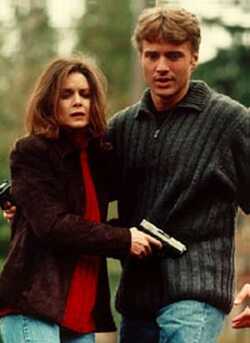 The imagination on view is exemplified by the title; changing a definite article is about as imaginative as it gets in this TV movie. Kapture, a veteran of Silk Stalkings, plays Jenny Farrell, the security officer at a pharmaceutical company who has to guard the only witness to a robbery, a deaf man (Natale) whom the villains want dead. Oh, and they’ve got inside help.
The imagination on view is exemplified by the title; changing a definite article is about as imaginative as it gets in this TV movie. Kapture, a veteran of Silk Stalkings, plays Jenny Farrell, the security officer at a pharmaceutical company who has to guard the only witness to a robbery, a deaf man (Natale) whom the villains want dead. Oh, and they’ve got inside help. Arriving on a DVD of such poor quality, it has been shorn entirely of both opening and closing credits, but hey, I paid $4.99, so can’t really complain. The heroine – named Charlene for most of the film – helps her father run the White Lotus, a rebel group fighting the government in 18th-century China. They have to avoid capture, while simultaneously looking for her long-lost mother (who is in her turn, looking after them), and further diversion is caused by a subplot involving an evil landlord trying to marry a young girl against her will.
Arriving on a DVD of such poor quality, it has been shorn entirely of both opening and closing credits, but hey, I paid $4.99, so can’t really complain. The heroine – named Charlene for most of the film – helps her father run the White Lotus, a rebel group fighting the government in 18th-century China. They have to avoid capture, while simultaneously looking for her long-lost mother (who is in her turn, looking after them), and further diversion is caused by a subplot involving an evil landlord trying to marry a young girl against her will.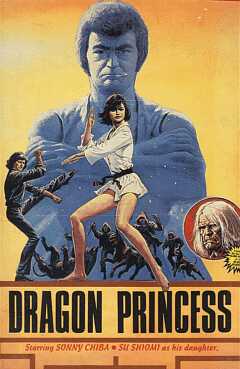 If ever a movie was condemned by the medium, this is it – it’s badly dubbed, cropped to oblivion, and the print looks as if it has recently been used as kitty litter. Just what DVD was invented for… Plotwise, there’s certainly nothing new. Shiomi plays the daughter of a kung-fu master (Chiba) who was crippled by his rival (Ishabashi) in a spat over a job. He retires to New York to plot revenge, using his daughter as his weapon. After the traditional, getting-beaten-up-repeatedly training, she returns to Japan, wastes no time in making a nuisance of herself and everything heads relentlessly towards the big showdown.
If ever a movie was condemned by the medium, this is it – it’s badly dubbed, cropped to oblivion, and the print looks as if it has recently been used as kitty litter. Just what DVD was invented for… Plotwise, there’s certainly nothing new. Shiomi plays the daughter of a kung-fu master (Chiba) who was crippled by his rival (Ishabashi) in a spat over a job. He retires to New York to plot revenge, using his daughter as his weapon. After the traditional, getting-beaten-up-repeatedly training, she returns to Japan, wastes no time in making a nuisance of herself and everything heads relentlessly towards the big showdown.